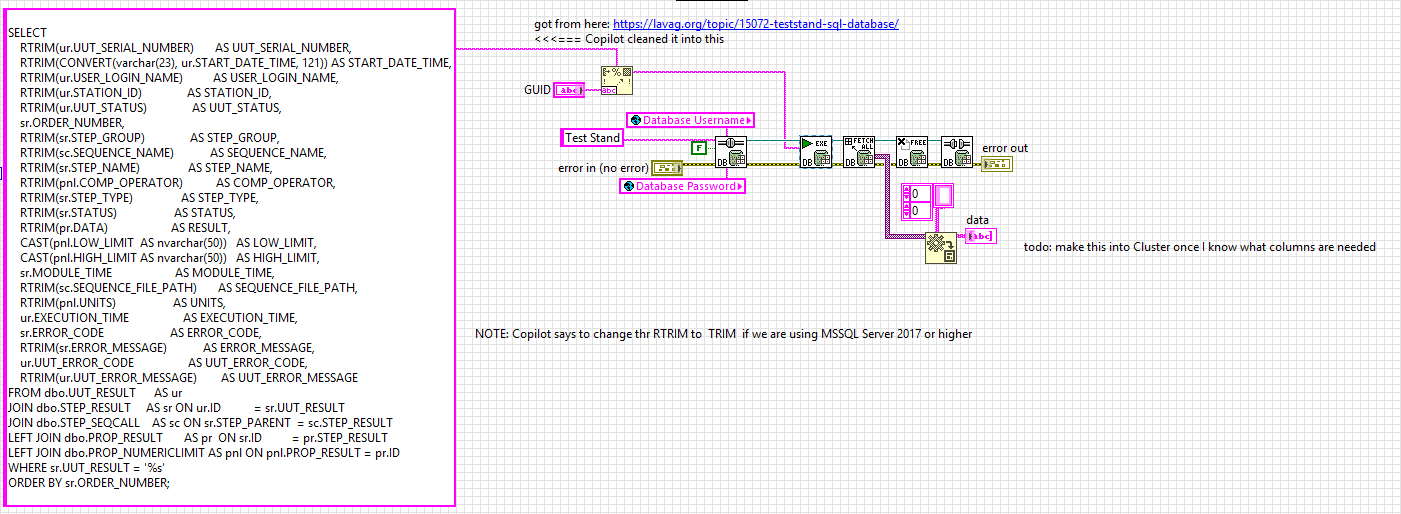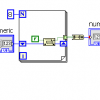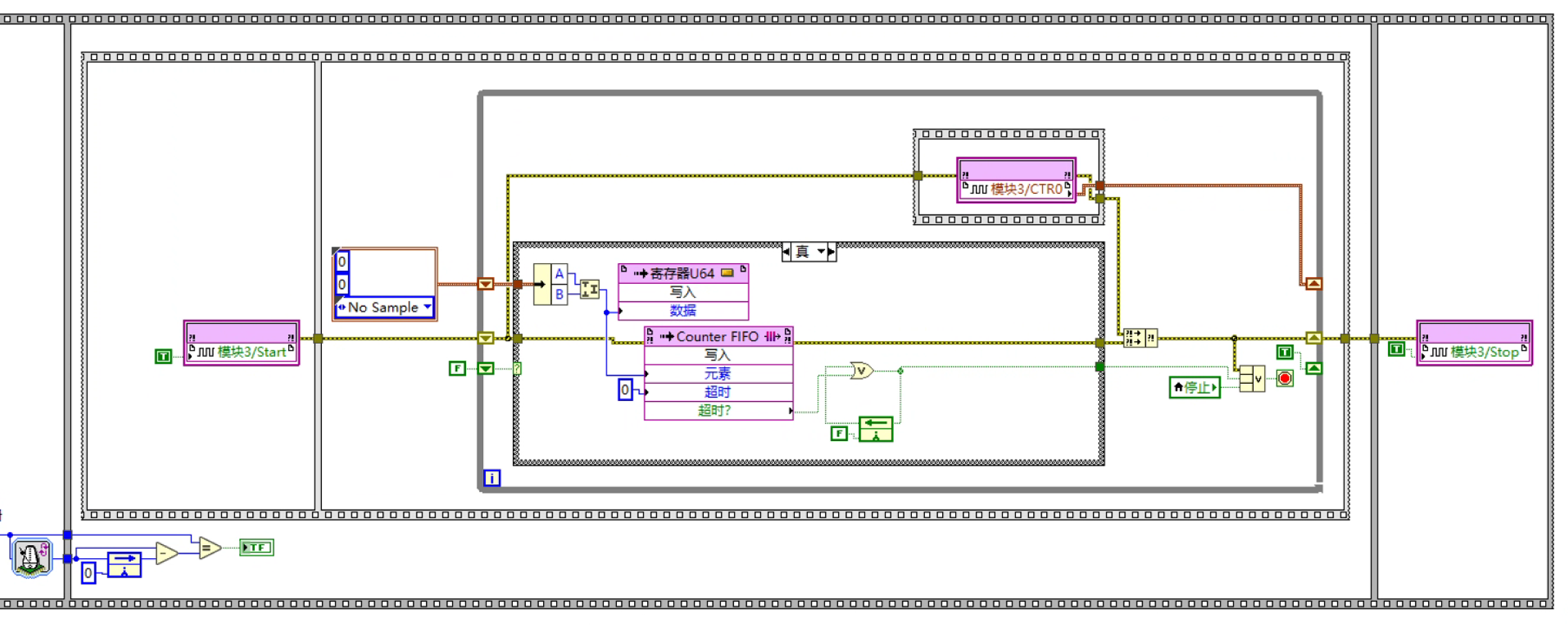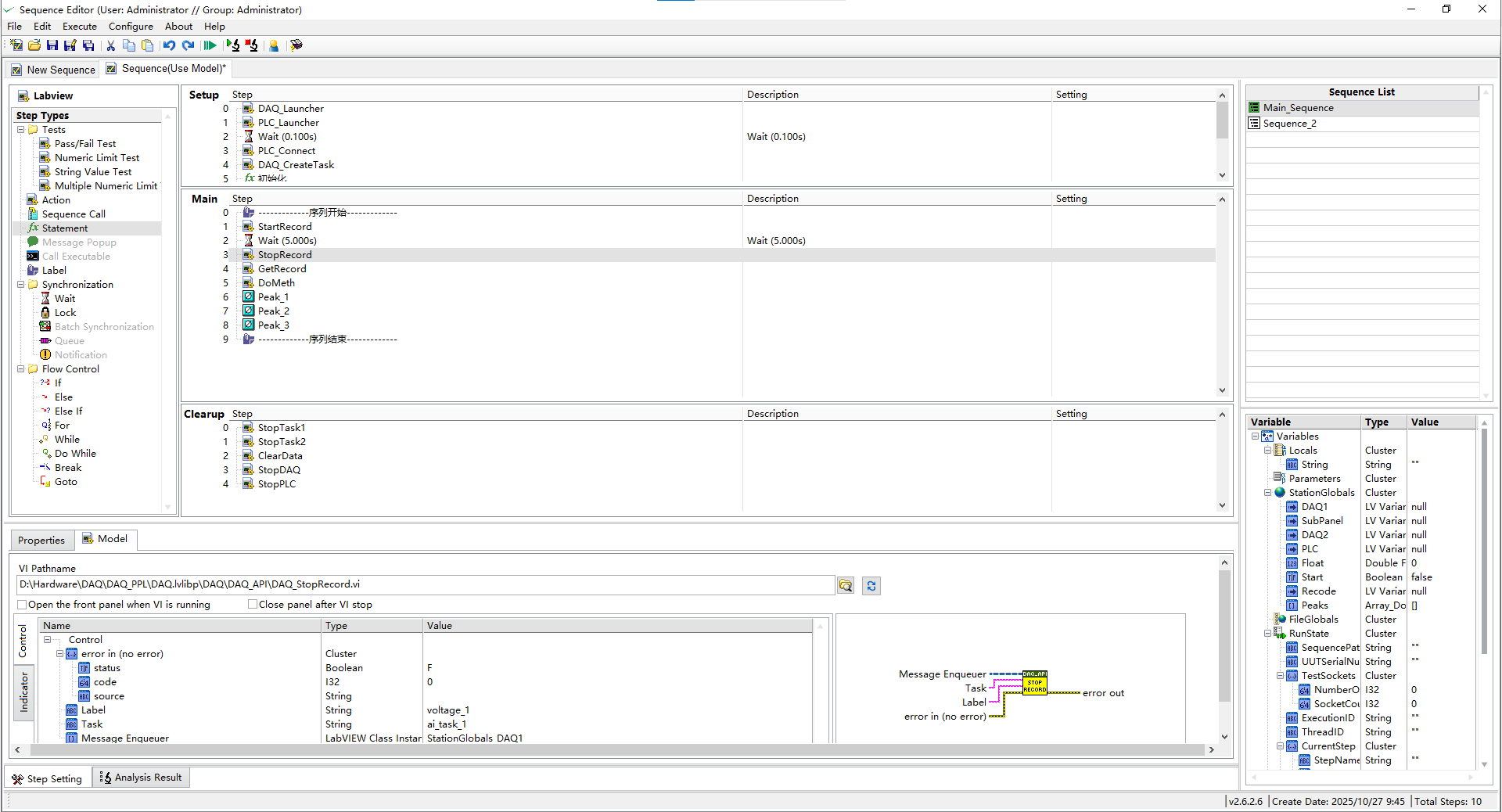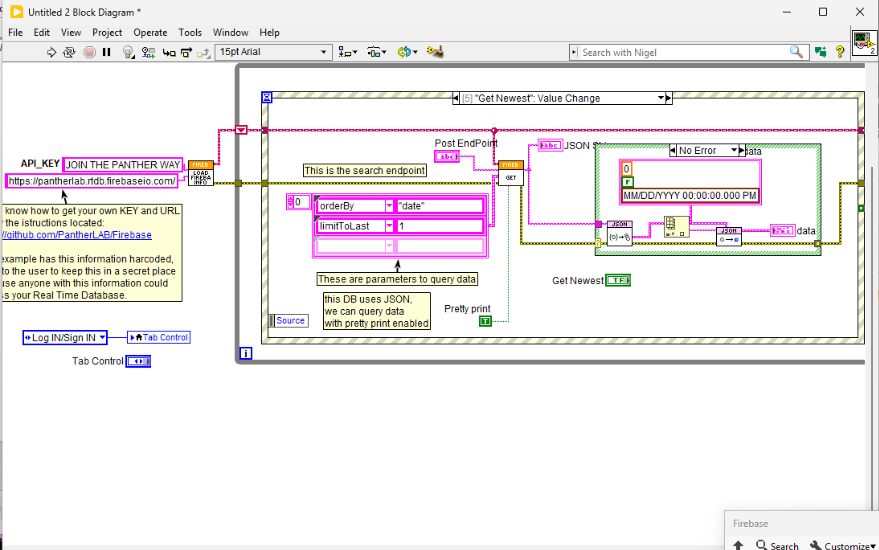All Activity
- Past hour
-
Softball started following LabVIEWs response time during editing becomes so long
-

LabVIEWs response time during editing becomes so long
Softball replied to MikaelH's topic in LabVIEW General
Hi NI has always tried to 'optimize' the compiler so the code runs faster. In LabVIEW 2009 they introduced a version where the compiler would do extra work to try to inline whatever could be inlined. 2009 was a catastrophe with the compiler running out of memory with my complex code and NI only saved their reputation by introducing the hybrid compiler in 2010 SP1. Overall a smooth sailing thereafter up to and including 2018 SP1. NI changed something in 2015, but its effect could be ignored if this token was included in the LabVIEW.in file : EnableLegacyCompilerFallback=TRUE. In LabVIEW 2019 NI again decided to do something new. They ditched the hybrid compiler. It was too complex to maintain, they argued. 2019 reminded me somewhat of the 2009 version, except that the compiler now did not run out of memory, but editing code was so sloow and sometimes LabVIEW simply crashed. NI improved on things in the following versions, but they has yet to be snappy ( ~ useful ) with my complex code. Regards - Today
-
hooovahh started following LabVIEWs response time during editing becomes so long
-

LabVIEWs response time during editing becomes so long
hooovahh replied to MikaelH's topic in LabVIEW General
My projects can be on that order of size and editing can be a real pain. I pointed out the difficulties to Darren in QD responsiveness and he suggested looking for and removing circular dependencies in libraries and classes. I think it helped but not by much. Going to PPLs isn't really an option since so many of the VIs are in reuse packages, and those packages are intended to be used across multiple targets, Windows and RT. This has a cascading affect and linking to things means they need to be PPLs, made for that specific target, and then the functions palette needs to be target specific to pull in the right edition of the dependencies. AQ mentioned a few techniques for target specific VI loading, but I couldn't get it to work properly for the full project. -

LabVIEWs response time during editing becomes so long
Neil Pate replied to MikaelH's topic in LabVIEW General
@Thomas Robertson 18k VIs? OK, that is quite a big project. Have you tried splitting things up, maybe introducing a few PPLs? -

LabVIEWs response time during editing becomes so long
Thomas Robertson replied to MikaelH's topic in LabVIEW General
Just wanted to chime in on this Zombie thread and say I have all of these problems and it's driving me crazy. LV2023, Roughly 18,000 vis in the project. - Yesterday
-
Phillip Brooks started following Preventing Windows going to Lock screen
-
What is the difference between libre office and MS office in labview ? Do you think that it will work correctly after this change ?
- Last week
-
Alonso Quintanilla joined the community
-
Ray Abram started following Teststand SQL database
-
here is a version without the DECLARE, which LabVIEW's Database tool kit can execute using the "Conn Execute.vi" Here is how to use the query with LabVIEW's Database toolkit Here is the updated query SELECT RTRIM(ur.UUT_SERIAL_NUMBER) AS UUT_SERIAL_NUMBER, RTRIM(CONVERT(varchar(23), ur.START_DATE_TIME, 121)) AS START_DATE_TIME, RTRIM(ur.USER_LOGIN_NAME) AS USER_LOGIN_NAME, RTRIM(ur.STATION_ID) AS STATION_ID, RTRIM(ur.UUT_STATUS) AS UUT_STATUS, sr.ORDER_NUMBER, RTRIM(sr.STEP_GROUP) AS STEP_GROUP, RTRIM(sc.SEQUENCE_NAME) AS SEQUENCE_NAME, RTRIM(sr.STEP_NAME) AS STEP_NAME, RTRIM(pnl.COMP_OPERATOR) AS COMP_OPERATOR, RTRIM(sr.STEP_TYPE) AS STEP_TYPE, RTRIM(sr.STATUS) AS STATUS, RTRIM(pr.DATA) AS RESULT, CAST(pnl.LOW_LIMIT AS nvarchar(50)) AS LOW_LIMIT, CAST(pnl.HIGH_LIMIT AS nvarchar(50)) AS HIGH_LIMIT, sr.MODULE_TIME AS MODULE_TIME, RTRIM(sc.SEQUENCE_FILE_PATH) AS SEQUENCE_FILE_PATH, RTRIM(pnl.UNITS) AS UNITS, ur.EXECUTION_TIME AS EXECUTION_TIME, sr.ERROR_CODE AS ERROR_CODE, RTRIM(sr.ERROR_MESSAGE) AS ERROR_MESSAGE, ur.UUT_ERROR_CODE AS UUT_ERROR_CODE, RTRIM(ur.UUT_ERROR_MESSAGE) AS UUT_ERROR_MESSAGE FROM dbo.UUT_RESULT AS ur JOIN dbo.STEP_RESULT AS sr ON ur.ID = sr.UUT_RESULT JOIN dbo.STEP_SEQCALL AS sc ON sr.STEP_PARENT = sc.STEP_RESULT LEFT JOIN dbo.PROP_RESULT AS pr ON sr.ID = pr.STEP_RESULT LEFT JOIN dbo.PROP_NUMERICLIMIT AS pnl ON pnl.PROP_RESULT = pr.ID WHERE sr.UUT_RESULT = '%s' ORDER BY sr.ORDER_NUMBER;
-
I was unable to run the query in MSSQL... Copilot was able to rearrange a few things and resulted inn the following working query next step is to use the LabVIEW Database toolkit to execute the querry DECLARE @UGID nvarchar(50); SET @UGID = N'C0CFF9BF-A8A5-11F0-9E18-4CB04AE64A78'; SELECT RTRIM(ur.UUT_SERIAL_NUMBER) AS UUT_SERIAL_NUMBER, RTRIM(CONVERT(varchar(23), ur.START_DATE_TIME, 121)) AS START_DATE_TIME, -- ISO 8601 RTRIM(ur.USER_LOGIN_NAME) AS USER_LOGIN_NAME, RTRIM(ur.STATION_ID) AS STATION_ID, -- <-- moved to UUT_RESULT RTRIM(ur.UUT_STATUS) AS UUT_STATUS, sr.ORDER_NUMBER, -- keep numeric for sorting RTRIM(sr.STEP_GROUP) AS STEP_GROUP, RTRIM(sc.SEQUENCE_NAME) AS SEQUENCE_NAME, RTRIM(sr.STEP_NAME) AS STEP_NAME, RTRIM(pnl.COMP_OPERATOR) AS COMP_OPERATOR, RTRIM(sr.STEP_TYPE) AS STEP_TYPE, RTRIM(sr.STATUS) AS STATUS, RTRIM(pr.DATA) AS RESULT, CAST(pnl.LOW_LIMIT AS nvarchar(50)) AS LOW_LIMIT, CAST(pnl.HIGH_LIMIT AS nvarchar(50)) AS HIGH_LIMIT, sr.MODULE_TIME AS MODULE_TIME, RTRIM(sc.SEQUENCE_FILE_PATH) AS SEQUENCE_FILE_PATH, RTRIM(pnl.UNITS) AS UNITS, ur.EXECUTION_TIME AS EXECUTION_TIME, sr.ERROR_CODE AS ERROR_CODE, RTRIM(sr.ERROR_MESSAGE) AS ERROR_MESSAGE, ur.UUT_ERROR_CODE AS UUT_ERROR_CODE, RTRIM(ur.UUT_ERROR_MESSAGE) AS UUT_ERROR_MESSAGE FROM dbo.UUT_RESULT AS ur JOIN dbo.STEP_RESULT AS sr ON ur.ID = sr.UUT_RESULT JOIN dbo.STEP_SEQCALL AS sc ON sr.STEP_PARENT = sc.STEP_RESULT LEFT JOIN dbo.PROP_RESULT AS pr ON sr.ID = pr.STEP_RESULT LEFT JOIN dbo.PROP_NUMERICLIMIT AS pnl ON pnl.PROP_RESULT = pr.ID WHERE sr.UUT_RESULT = @UGID ORDER BY sr.ORDER_NUMBER;
-
jiangxinxin joined the community
-
There is a good chance that Microsoft eventually dropped support in Office for 32-bit applications. What I wrote above was true 2015 - 2020. Haven't ever tried to use Excel from LabVIEW since, and generally use Libre Office anyhow if I need an Office application.
-
nutellina2000 joined the community
-
jfuell joined the community
-
PiotrG joined the community
-
Hello, Yes I also check that there are no problem with ActiveX and I also try Repair Install but nothing happen, there are the same problem
-
Hello, When I try to debug I check the compatibility between the labview version and MS Office version there are no problem.
-
JSchwochow joined the community
-
Ledz joined the community
-
hooovahh started following Preventing Windows going to Lock screen
-
Wow that is a great tool. My suggestion (which is not as good) is to use a NoSleep program. I made one in AutoIt scripting years ago and have been having it run on startup of test PCs for years. There are a couple versions, one would turn on and off the scroll lock every 30 seconds, but sometimes it did need a mouse jiggle to keep it awake. Here is one I found online that is similar to what I have used. One down side of this I did discover is that if you use remote desktop, and you remove into a machine that has a mouse jiggle no sleep, then it will do weird things in the host PC.
-

Preventing Windows going to Lock screen
AutoMeasure replied to AutoMeasure's topic in User Interface
I tried it, that Request Display function works in my test program. Looks like I just need to call it once and then keep the handle open. Thanks very much! -Joe -
Look at this new download on VIPM https://www.vipm.io/package/bjm_lib_request_power/
-
I have always used this library to prevent the screensaver and windows lock from occurring. Our IT locks down the computer so the screensaver, lock screen, cannot be changed. This library bascially tells Windows it's in Presentation mode, e.g., slideshow, watching a movie, etc, such that the screen will not got to screensaver or lock screen.
-
AutoMeasure started following Preventing Windows going to Lock screen
-
Hi folks - Do any of you know of a way to prevent Windows from going to lock screen during a long test run, by sending a command or doing some action periodically inside the Labview program? Assuming that the lock screen timeout setting is inaccessible due to access restriction. Telling the test operator to jiggle the mouse every couple of minutes is not always an option, ha ha. Thanks, -Joe
-
Rolf Kalbermatter started following Lire un fichier Excel sur labview
-
It could be made to work in the past. Basically the Office interfaces are all ActiveX based. ActiveX is very well able to invoke an ActiveX Automation Server out of process through an ActiveX proxy server process in the background. If the ActiveX Automation Server is properly registered this happens transparently in the background without extra user interactions. Unfortunately the so called Click to Run MS Office installers that are nowadays used, either forget to do the 32-bit registration of their Automation Server component or somehow bork it up. I have been in the past able to fix that on different machines by running a Repair Install from the Windows Applications control panel.
-
smiga started following Extracting Firebase JSON Data Into a LabVIEW Table
-
Make sure your office installation has the same bitness as LabVIEW. 64-bit office (most recent installations are 64 bits) won't work with LV 32bit.
-
I’d like to ask you about reading quadrature encoder position signals in an FPGA environment using the NI-9361. In X4 mode, I followed the example program to write my code, but I still cannot get any data. I am using a loop timer together with a flat sequence structure to form a timed loop for acquiring the position signal.I’m very sorry that I only have a Chinese version. I hope to get help from everyone!
-
LA_YUAN joined the community
-
ekrep joined the community
-
Bonjour à tous, Je demande de l'aide car, j'essaye de dépanner un programme labview que je n'ai pas conçu. Le programme labview lis un fichier xlsx ou CSV (j'ai essayé dans les deux cas) afin d'envoyer plusieurs niveau de tension. Je tiens à préciser que le programme fonctionnait bien de base, mais du jour au lendemain plus rien, j'ai donc re installer excel reconfiguré au cas où il y avait une potentielle mise a jour de faite mais rien non plus de ce côté. J'ai beau avoir poncer les forums et les recherches mais rien de positif.
- Earlier
-
我在Windows 11上用32位LabVIEW 2020版本构建了一个程序,在开发环境中运行良好。当我尝试将它们构建到exe中时,弹出提示说“内存不足以完成此作”,如图所示。我该怎么做才能解决这个问题? 有人能给我一些建议吗?任何建议都将非常感激。 problem.bmp
-
zzzcl joined the community
-
Gepponline started following Regeneration of ana rbitrary waveform
-
Hi, I'm generating a user drawed waveform (it can be half sine, with a square, than a triangle and so on all in a single waveform) and I need this waveform to be changed by the user without any pause between the old an the new wave. The new wave MUST start at the end of the old one. As I understood making some tests, If I use regeneration mode (so I use the internal FIFO buffer) I have to stop, fill the buffer with the new wave and then restart and that cause an unwanted pause between waveforms. Because If I populate directly the buffer I will get a glitch having some old and some new values. To avoid this behaviour I generate a fixed samplerate waveform (so I the new waveform is longer oor shorter I interpolate it) and loop regenerating and starting it every iteration. The waveform MUST have a duration major than the generation cycle (that's why I duplicate waveform if not double than the cycletime) In this way it seems to work as I expect but it doesn't seem a clean solution to me. Any suggestion of how to improve my code? (In the past I thought about manipulating the internal buffer use splitting it as a two part buffer, one for the old and one for the new wave but it wasn't possible) Thank youSintesi_gnerazione_segnale.vi
-
哈哈哈,确实如此,和他们很难有沟通的欲望。不过你做的这个功能看起来非常完善啊,方便WX交流不?WX号:CunZhangYaa
- 10 replies
-
- sequence
- sequence editor
-
(and 3 more)
Tagged with:
-
- 10 replies
-
- sequence
- sequence editor
-
(and 3 more)
Tagged with:
-

Extracting Firebase JSON Data Into a LabVIEW Table
Stagg54 replied to hwkim418's topic in LabVIEW General


